Essays
Essays
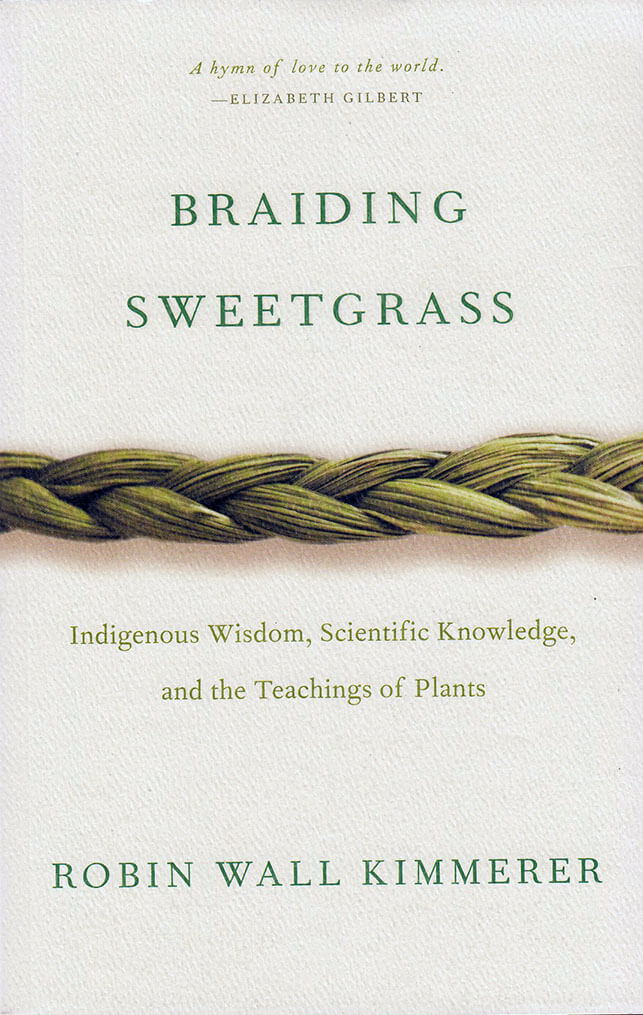
Braiding Sweetgrass
"As a leading researcher in the field of biology, Robin Wall Kimmerer understands the delicate state of our world. But as an active member of the Potawatomi nation, she senses and relates to the world through a way of knowing far older than any science. In Braiding Sweetgrass, she intertwines these two modes of awareness — the analytic and the emotional, the scientific and the cultural—to ultimately reveal a path toward healing the rift that grows between people and nature. The woven essays that construct this book bring people back into conversation with all that is green and growing; a universe that never stopped speaking to us, even when we forgot how to listen"
Robin Wall Kimmerer is a mother, scientist, decorated professor, and enrolled member of the Citizen Potawatomi Nation. She is the author of Braiding Sweetgrass: Indigenous Wisdom, Scientific Knowledge and the Teaching of Plants and Gathering Moss: A Natural and Cultural History of Mosses. She lives in Syracuse, New York, where she is a SUNY Distinguished Teaching Professor of Environmental Biology, and the founder and director of the Center for Native Peoples and the Environment.
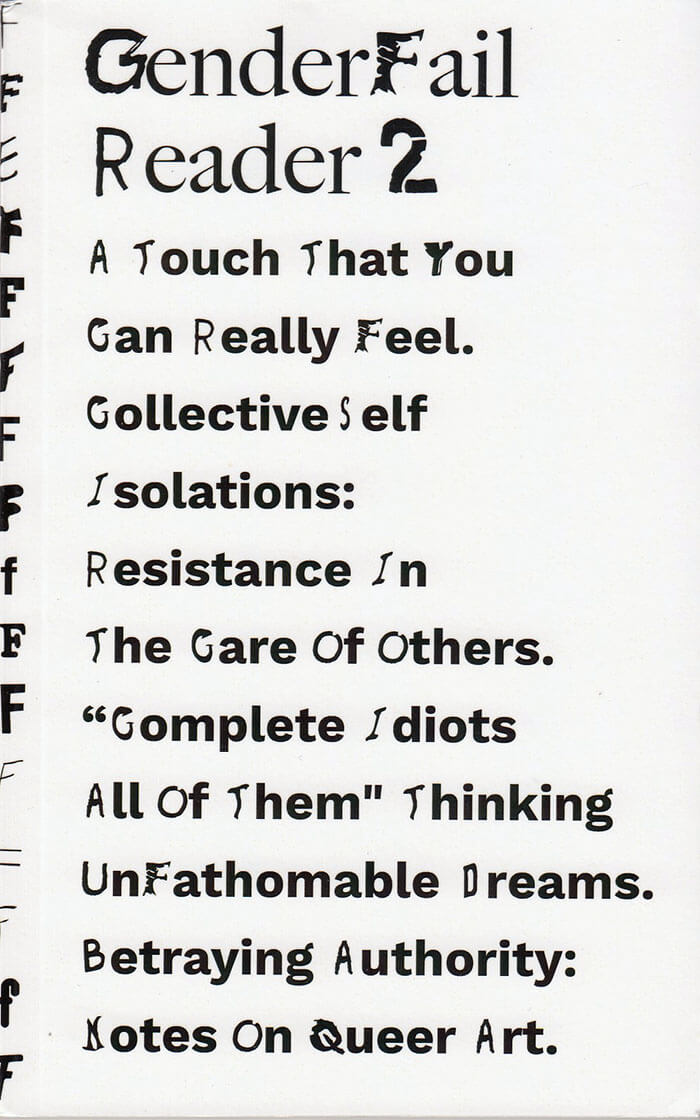
GF Reader 2
GenderFail Reader 2 is a compilation of four brand new essays written during the pandemic including Small Publishing and Finding Ways to Live, A Touch that You Can Really Feel, Collective Self Isolations: Resistance in the Care of Others and the Violence of Naming. This second printing also has a new essay “Complete Idiots All of Them: Thinking UnFathomable Dreams.
This reader also includes three new poems, Being an Instrument, Douche and Making Friends at 30, by my partner Noah LeBien, who as become such an important collaborator through my work with GenderFail. Noah also expanded their essay, Betraying Authority: Notes on Queer Art that was previously published as a zine.”
Be Oakley, (formally known as Brett Suemnicht) Born 1991 in Clearwater, Florida; is an writer, facilitator and publisher based in Brooklyn, NY. Oakley's projects looks to what Fred Moten calls "the politics of the mess" by framing their identity as a white non-binary queer person in its intersections with failure and internationality. In 2015 they started GenderFail, a publishing and programming initiative that seeks to encourage projects that foster an intersectional queer subjectivity. Their work has been shown in programs and exhibitions at MoMA PS1 (NYC), the Studio Museum of Harlem, The International Center of Photography (NYC), Vox Populi and Sediment Arts. Their publications can be found in the library collections of The Museum of Modern Art, The Whitney Museum, The Met Museum, The Center for Book Arts and many others.
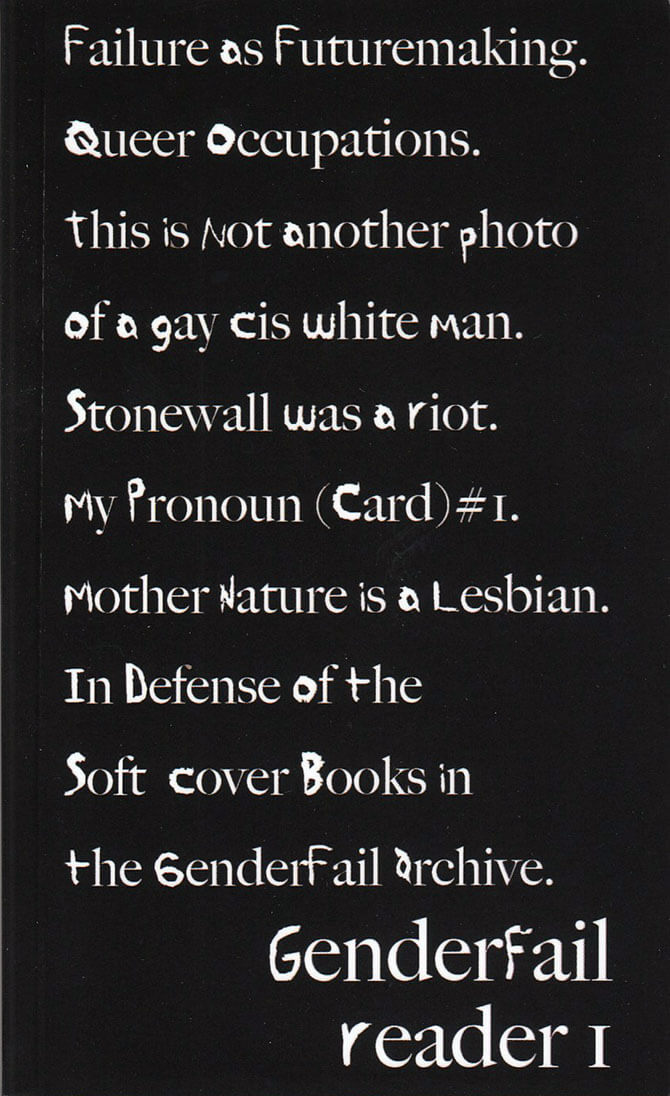
GF Reader 1
GF Reader 1 is a complication of six essays by GenderFail founder Be Oakley complied together for the first time. This publication features previous released essays from GF titles including Stonewall was a Riot, This is not another photo of a cis gay white men, My Pronoun (Card) #1 and In Defense of the Softcover Books in the GenderFail Archive. The GF Reader also includes Failure as Futuremaking, a new manifesto written in collaboration with artist Noah LeBien.
Be Oakley, (formally known as Brett Suemnicht) Born 1991 in Clearwater, Florida; is an writer, facilitator and publisher based in Brooklyn, NY. Oakley's projects looks to what Fred Moten calls "the politics of the mess" by framing their identity as a white non-binary queer person in its intersections with failure and internationality. In 2015 they started GenderFail, a publishing and programming initiative that seeks to encourage projects that foster an intersectional queer subjectivity. Their work has been shown in programs and exhibitions at MoMA PS1 (NYC), the Studio Museum of Harlem, The International Center of Photography (NYC), Vox Populi and Sediment Arts. Their publications can be found in the library collections of The Museum of Modern Art, The Whitney Museum, The Met Museum, The Center for Book Arts and many others.
Edition of 100.
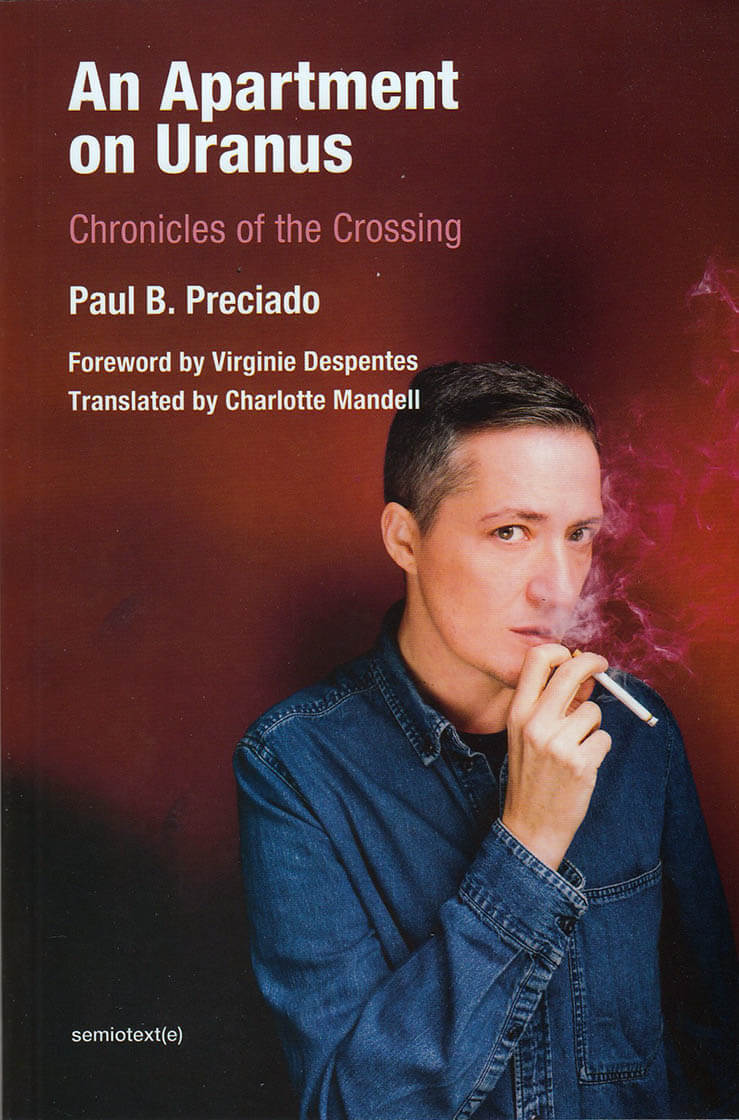
An Apartment on Uranus
A “dissident of the gender-sex binary system” reflects on gender transitioning and political and cultural transitions in technoscientific capitalism.
Uranus, the frozen giant, is the coldest planet in the solar system as well as a deity in Greek mythology. It is also the inspiration for uranism, a concept coined by the writer Karl Heinrich Ulrich in 1864 to define the “third sex” and the rights of those who “love differently.” Following Ulrich, Paul B. Preciado dreams of an apartment on Uranus where he might live beyond existing power, gender and racial strictures invented by modernity. “My trans condition is a new form of uranism,” he writes. “I am not a man. I am not a woman. I am not heterosexual. I am not homosexual. I am not bisexual. I am a dissident of the gender-sex binary system. I am the multiplicity of the cosmos trapped in a binary political and epistemological system, shouting in front of you. I am a uranist confined inside the limits of technoscientific capitalism.”
This book recounts Preciado's transformation from Beatriz into Paul B., but it is not only an account of gender transitioning. Preciado also considers political, cultural, and sexual transition, reflecting on issues that range from the rise of neo-fascism in Europe to the technological appropriation of the uterus, from the harassment of trans children to the role museums might play in the cultural revolution to come.

A Room of One's Own
A Room of One's Own is an extended essay by Virginia Woolf, first published in September 1929. The work is based on two lectures Woolf delivered in October 1928 at Newnham College and Girton College, women's colleges at the University of Cambridge. An important feminist text, the essay is noted in its argument for both a literal and figurative space for women writers within a literary tradition dominated by men.
In the tradition of Suhrkamp Verlag and Penguin Classics, Domain offers a series of elegantly designed pocketbooks, conceived as a starter kit for radical liberatory thought. The pocketbooks are individually crafted with custom book jackets tailored to each individual buyer; every purchase receipt supplying the raw material for each design. The online fulfillment system leverages the graphic language of the US Postal Service for each cover and packaging design.
More info on www.domainbooks.org
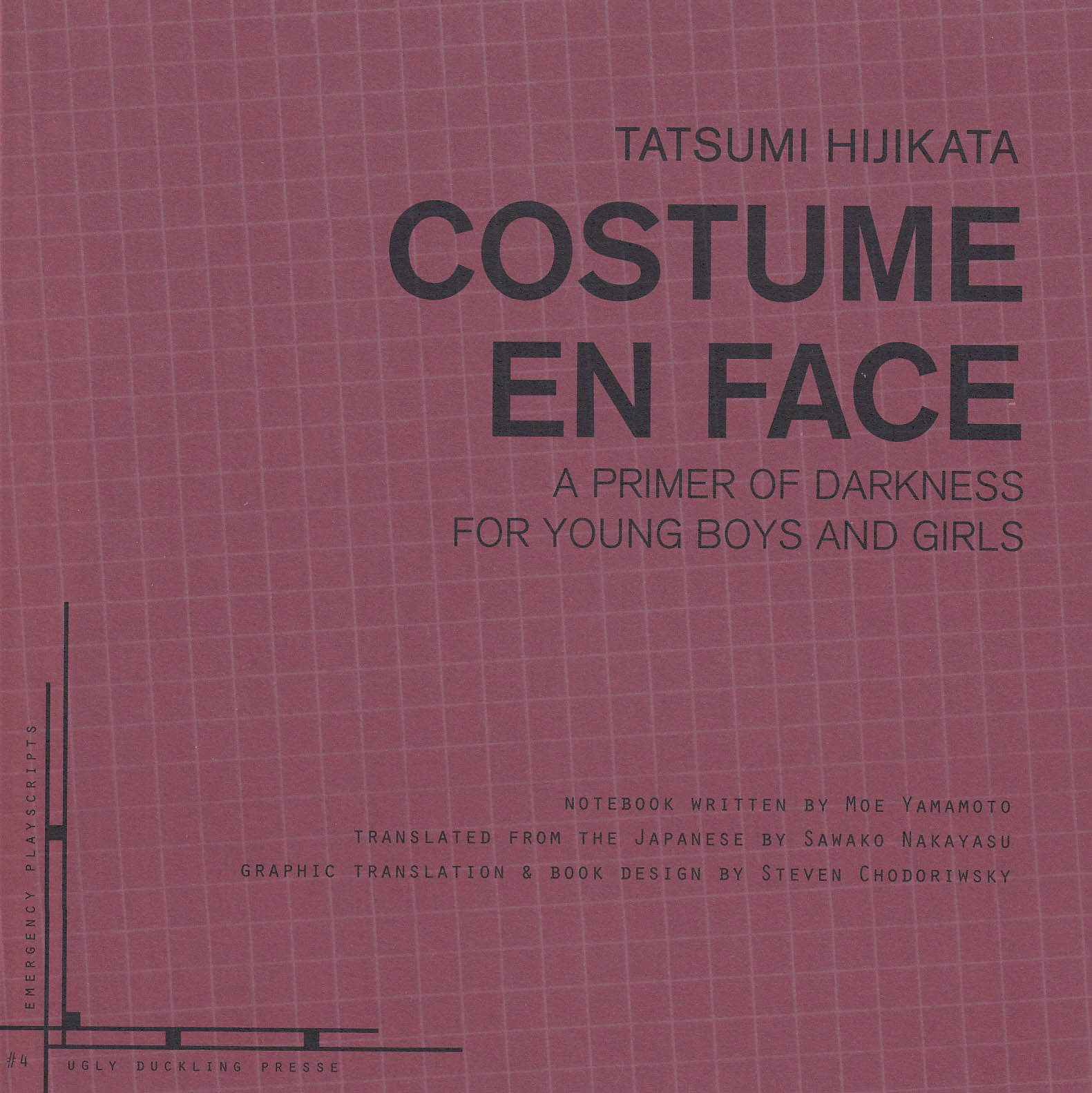
Costume En Face
As the founding father of the radical dance form that he called Butoh, Tatsumi Hijikata (1928-1986) is a legendary figure in the history of art and contemporary dance. Though influenced by Western artists and writers—the expressionist dance of Mary Wigman, the writings of Artaud, de Sade, Bataille, and Genet, and the drawings and paintings of Goya, Picasso, Toyen, Beardsley, and others–he was dedicated to the particular experience of the marginalized, Japanese suffering body after World War II.
In the mid-1970s, Hijikata became concerned with developing notation for his Butoh, and some of these Butoh-fu notations remain, largely in the form of notebooks transcribed by his disciples. Costume en Face is the first publication of one of Hijikata’s notebook notations in either English or Japanese. In it we can see, for the first time, the profound interconnectedness of language and body in Hijikata’s process of composition.
Tatsumi Hijikata was born in Japan in 1928. He founded the radical dance form known as Butoh, which requires dancers to internalize complex and often grotesque images, experiences and perspectives in order to produce precise movements. Even after his abrupt death in 1986, his dance works and writings continue to be extremely influential.

Bruce Boon Dismembered
Bruce Boone Dismembered collects nearly five decades of writing by Bruce Boone, a founder of New Narrative and critical figure at the crossroads of late-twentieth-century avant-garde and social movement writing. At once sexy and political, gossipy and scholarly, this crucial volume includes poems, stories, essays, interviews, and reviews.
In a time of disorder and disease, Boone’s body of work acts as a mirror to our dismembered global reality. This scavenged, collaged, taped-together collection provides a “map to negotiate perils” and guides us toward reconciliation with perilous futures. This book exemplifies the poignancy that might emerge from the found and frenetic.
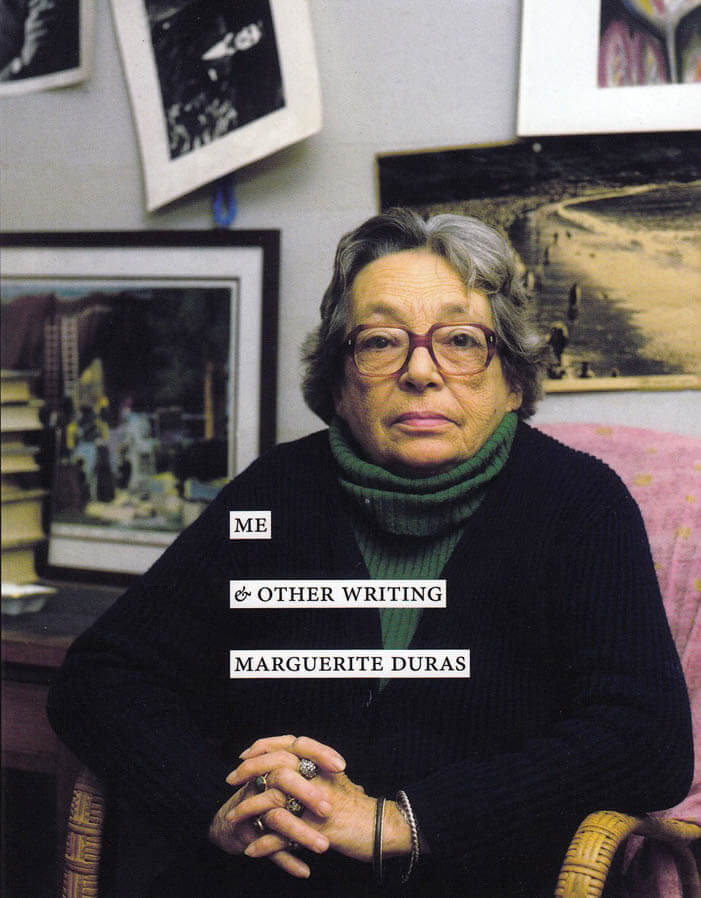
Me and Other Writing
A guidebook to the extraordinary breadth of Duras's nonfiction. From the stunning one-page "Me" to the sprawling 70-page "Summer 80," there is not a piece in this collection that can be easily categorized. These are essayistic works written for their times but too virtuosic to be relegated to history, works of commentary or recollection or reportage that are also, unmistakably, works of art.

F.R. David - Very Good
F.R.DAVID is a typographical journal, dealing with the organisation of reading and writing in contemporary art practises. The 19th issue, “very good*” is edited with Paul Abbott. Like music, the issue’s “theme” is better off unaccounted for, and up in the air, like a flock of birds (creatures who feature heavily), circling around performance, listening bodies, given time, and loving relations.
The nineteenth issue of ‘F.R.DAVID’ is edited by Will Holder and Paula Abbott, and will serve as a reader for “We can still see the horizon (and it’s curved)”, a summer residency in Scotland led by the editors. It includes a surprising array of contributions from writer Jorge Luis Borges, journalist and writer Italo Calvino, composer Hugo Cole, literary critic and theorist Barbara Herrnstein Smith, percussionist Milford Graves, philosopher Michel Serres, novelist and essayist Wilson Harris, poet Bernadette Mayer, composer and music theorist Harry Partch, pianist and poet Cecil Taylor, and several others.
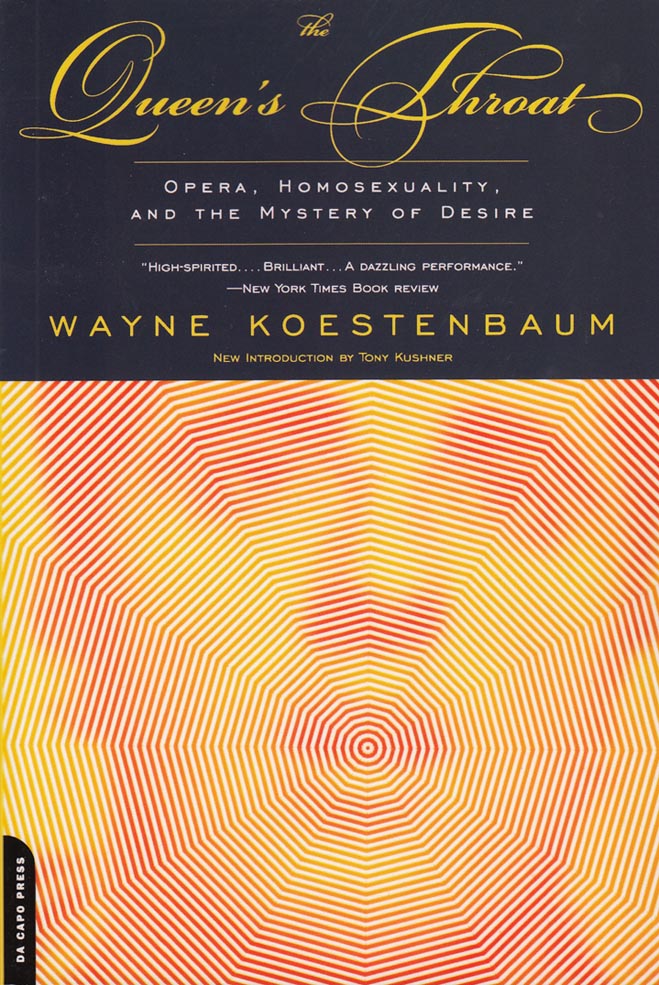
The Queen's Throat
This passionate love letter to opera, lavishly praised and nominated for a National Book Critics Circle Award when it was first published, is now firmly established as a cult classic. In a learned, moving, and sparklingly witty melange of criticism, subversion, and homage, Wayne Koestenbaum illuminates mysteries of fandom and obsession, and has created an exuberant work of personal meditation and cultural history.
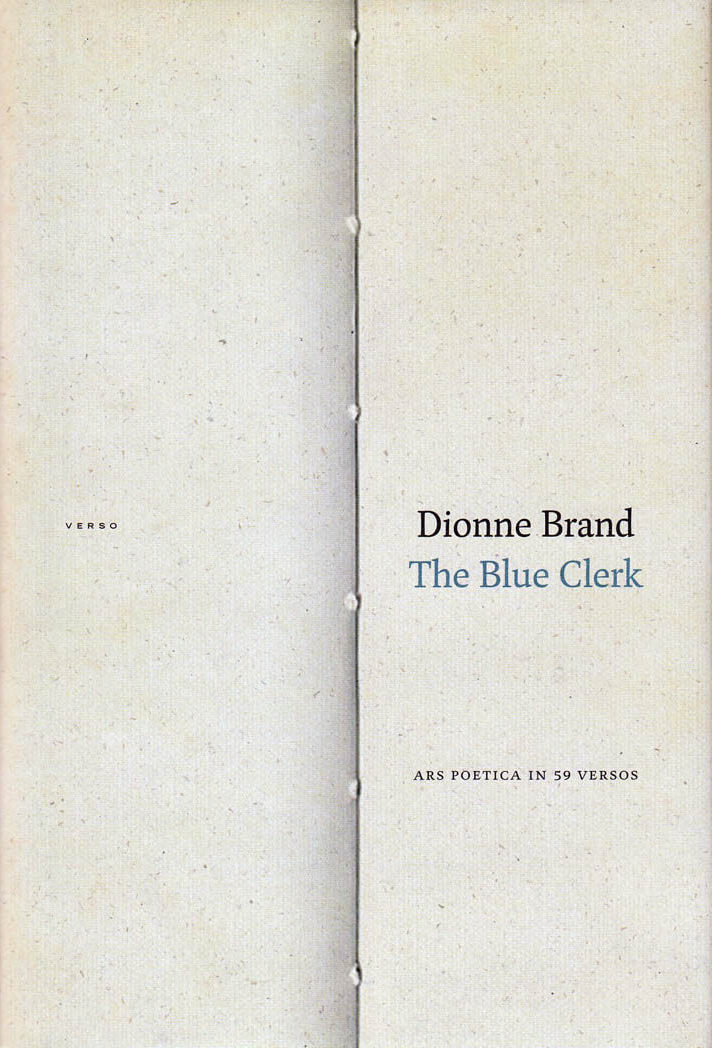
The Blue Clerk
On a lonely wharf a clerk in an ink-blue coat inspects bales and bales of paper that hold a poet's accumulated left-hand pages—the unwritten, the withheld, the unexpressed, the withdrawn, the restrained, the word-shard.
In The Blue Clerk renowned poet Dionne Brand stages a conversation and an argument between the poet and the Blue Clerk, who is the keeper of the poet's pages. In their dialogues—which take shape as a series of haunting prose poems—the poet and the clerk invoke a host of writers, philosophers, and artists, from Jacob Lawrence, Lola Kiepja, and Walter Benjamin to John Coltrane, Josephine Turalba, and Jorge Luis Borges.
Through these essay poems, Brand explores memory, language, culture, and time while intimately interrogating the act and difficulty of writing, the relationship between the poet and the world, and the link between author and art. Inviting the reader to engage with the resonant meanings of the withheld, Brand offers a profound and moving philosophy of writing and a wide-ranging analysis of the present world.
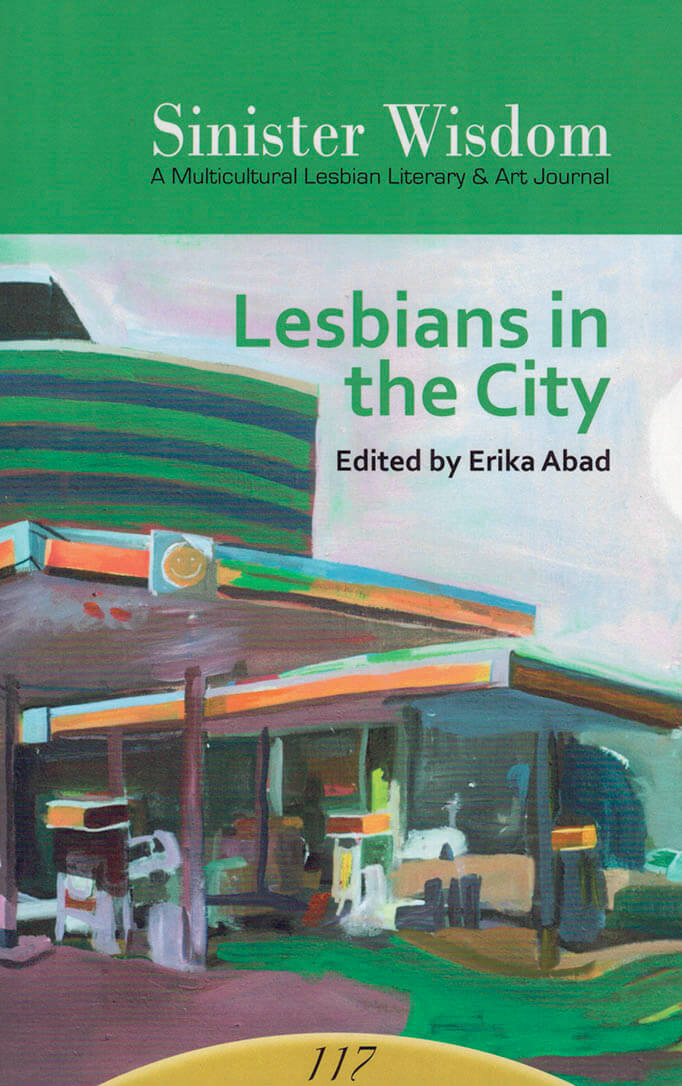
Lesbians in the City
How do lesbians live in the city, whether they live in the city by themselves or within intentional community? How does the city change what being a lesbian means? Sinister Wisdom 117: Lesbians in the City explores these questions—and many more.
The issue features creative work by: Srestha Sen, Carina Julig, Roin Morigeau, t pomar, Rita Mookerjee, Margarita Meklina as well as SPORTS — a selection of work from the Southern Lesbian Feminist Activist Herstory Project, edited by Rose Norman and Merril Mushroom. Plus a great selection of new lesbian writing!

Poetic Intention
This is the first English-language translation of Poetic Intention, Glissant’s classic meditation on poetry and art. In this wide-ranging book, Glissant discusses poets, including Stéphane Mallarmé and Saint-John Perse, and visual artists, such as the Surrealist painters Matta and Wilfredo Lam, arguing for the importance of the global position of art. He states that a poem, in its intention, must never deny the “way of the world.” Capacious, inventive, and unique, Glissant’s Poetic Intention creates a new landscape for understanding the relationship between aesthetics and politics.

queer city, a reader
A collection of essays, artistic contributions, and two inserted zines, Queer City, A Reader was developed as part of an 18-month inquiry in São Paulo. Initiated by Lanchonete.org and ArtsEverywhere/Musagetes, the Queer City program was a broad collective inquiry into how can we understand the contemporary city through a queer, intersectional, non-normative lens. The program included a series of encounters, dinners, residencies and performances, and Queer City, A Reader reconfigures these moments into a new form, extending the inquiry trans-nationally.
With contributions by Todd Lanier Lester, Shawn Van Sluys, Jota Mombaça, Bruno Mendonça and Nat Cout, João Marcelo and Claudio Bueno, Juliana Santos, Thiago Carrapatoso, Bibi Abigail, Carué Contreiras, Bruno Puccinelli, Vitor Grunvald, Kadija, Regis Mikail, Sabrina Duran, Jean-François Prost, Niki Singleton, Thiago Hersan, Ternura Radical and the Queer Graphics Laboratory. Edited by Júlia Ayerbe and designed by Laura Davinas of Edições Aurora/Publication Studio São Paulo. The English version of this book was published by Publication Studio Guelph. It is available in Portugese from Publication Studio São Paulo. Printed by Publication Studio Rotterdam for rile*.
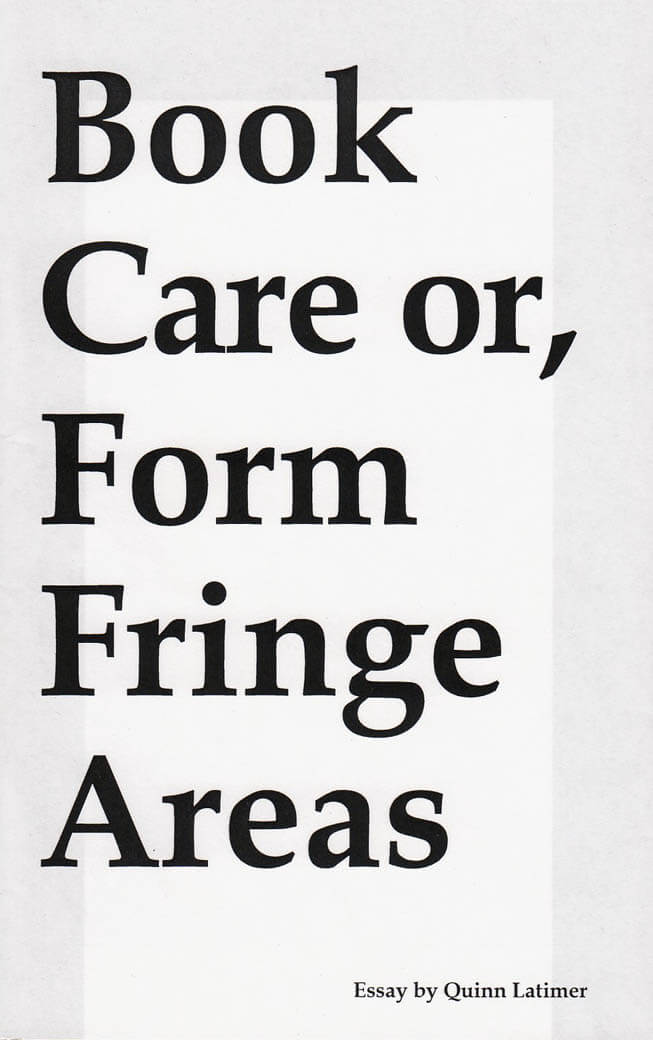
Best Book Don't Care Or, Poor Form From Fringe Areas
An essay on the forms or purposes of writing, books and libraries. Or as Quinn Latimer wrote: 'There is a relatively well-known workshop at Werkplaats Typografie, the school for design in Arnhem, Netherlands, called 'Best Books'. This past year the school asked the artist Sophie Nys to lead this course. In due time, Nys wrote König and asked if she might bring her students from the workshop to Cologne to discuss his work with books in the space of his own bookstore. She added that since he likely didn’t have enough chairs for all of her students, they would bring their own. König agreed. Then she asked her students to each pick their favorite book. They did so. Then she asked these students to design a chair inspired by that volume. An inspired idea. Strange—and useful. Thus 16 pieces of furniture suggested and elliptically inspired by specific books were built, a kind of living library of booklike creations, as another Walter might put it. The students went to see Herr König, stools in hand, their library entering his. I heard from Sophie in our email correspondence and singular Skype conversation that it was a wonderful visit. I even saw some pictures from that day. After the students returned to Arnhem, and for the final part of the project, they decided to make a publication. This is where I—and the text you are reading now—enter the picture, as they say.'
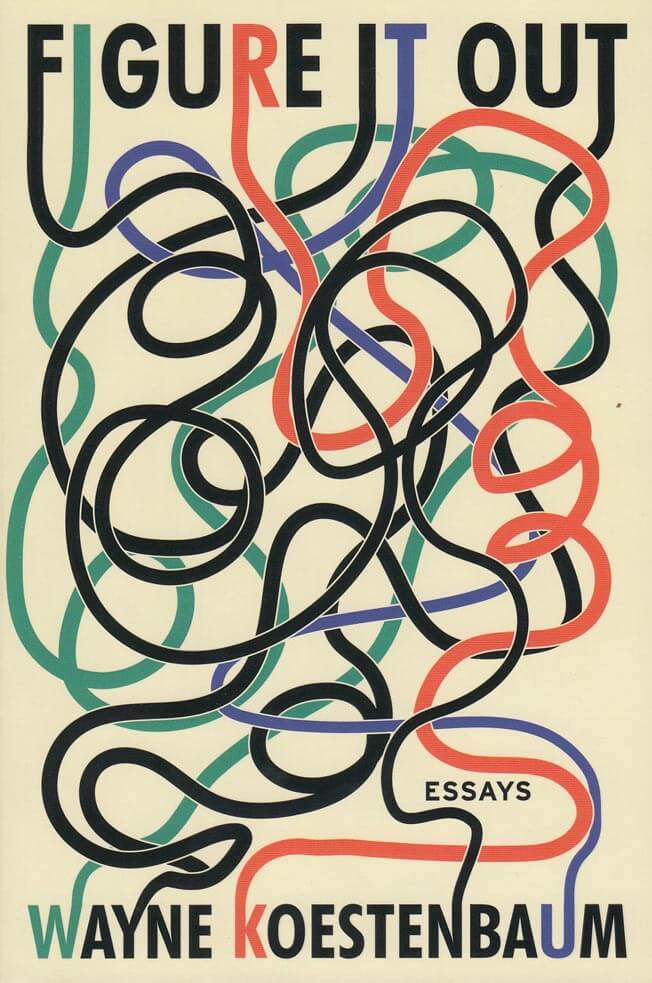
Figure It Out
'Toward what goal do I aspire, ever, but collision? Always accident, concussion, bodies butting together. By collision I also mean metaphor and metonymy: operations of slide and slip and transfuse.' In his new nonfiction collection, poet, artist, critic, novelist, and performer Wayne Koestenbaum enacts twenty-six ecstatic collisions between his mind and the world. A subway passenger's leather bracelet prompts musings on the German word for stranger; Montaigne leads to the memory of a fourth-grade friend's stinky feet.
Koestenbaum dreams about a hand job from John Ashbery, swims next to Nicole Kidman, reclaims Robert Rauschenberg's squeegee, and apotheosizes Marguerite Duras as a destroyer of sentences. He directly proposes assignments to readers: Buy a one-dollar cactus, and start anthropomorphizing it. Call it Sabrina. Describe an ungenerous or unkind act you have committed. Find in every orgasm an encyclopedic richness. Reimagine doing the laundry as having an orgasm, and reinterpret orgasm as not a tiny experience, temporally limited, occurring in a single human body, but as an experience that somehow touches on all of human history. Figure It Out is both a guidebook for, and the embodiment of, the practices of pleasure, attentiveness, art, and play.
May 2020
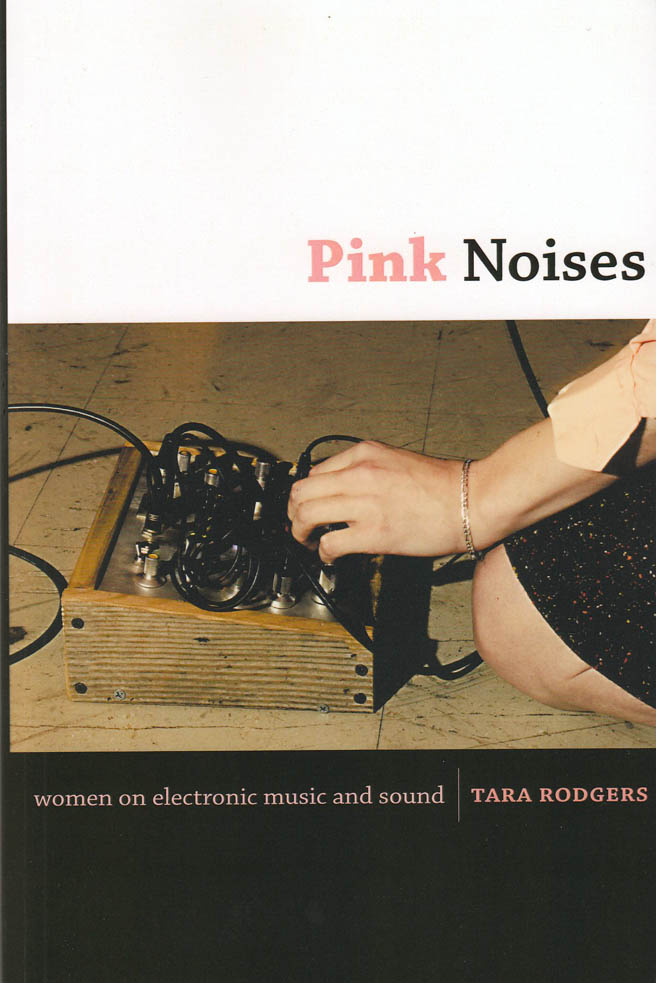
Pink Noises
Pink Noises brings together twenty-four interviews with women in electronic music and sound cultures, including club and radio DJs, remixers, composers, improvisers, instrument builders, and installation and performance artists. The collection is an extension of Pinknoises.com, the critically-acclaimed website founded by musician and scholar Tara Rodgers in 2000 to promote women in electronic music and make information about music production more accessible to women and girls. That site featured interviews that Rodgers conducted with women artists, exploring their personal histories, their creative methods, and the roles of gender in their work. This book offers new and lengthier interviews, a critical introduction, and resources for further research and technological engagement.
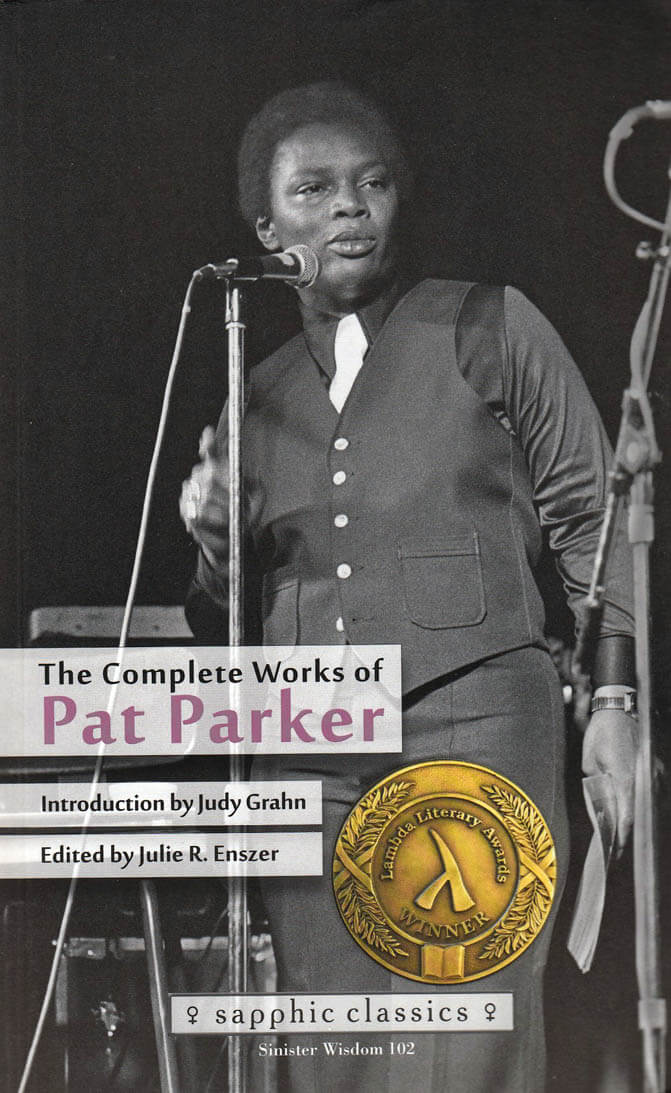
The Complete Works of Pat Parker
A Midsummer Night’s Press and Sinister Wisdom are pleased to announce the publication of Sinister Wisdom 102: The Complete Works of Pat Parker with a new introduction by poet and scholar Judy Grahn; an afterword by volume editor Julie R. Enszer, with extensive notes on the poems; photographs of Parker and a bibliography.
'In The Complete Works of Pat Parker, we have a trove of her artistic and political engagements-poetry and stories and plays and speeches; these are not separate realities. They intertwine in her now classic works, Movement in Black (1978), Womanslaughter (1978), and Jonestown & Other Madness (1985). But here too are less celebrated and uncollected works, plays especially, that show off Parker’s willingness to experiment, to push us towards more politicized realities.' - Alexis de Veaux
Included in Sinister Wisdom 102: The Complete Works of Pat Parker are Parker’s masterwork, Movement in Black, as well as Jonestown & other madness. Parker’s prose writing is collected in The Complete Works along with two unpublished plays and a number of previously uncollected poems. Editor Julie R. Enszer notes, “The breadth of creative output collected here demonstrates the seriousness of Parker’s overall work as a writer. Beginning in 1963, when she was nineteen years old, and continuing until she died in 1989, Parker took her work as a writer seriously. Gathering as much of it as possible into a single volume invites readers to take it seriously as well.”
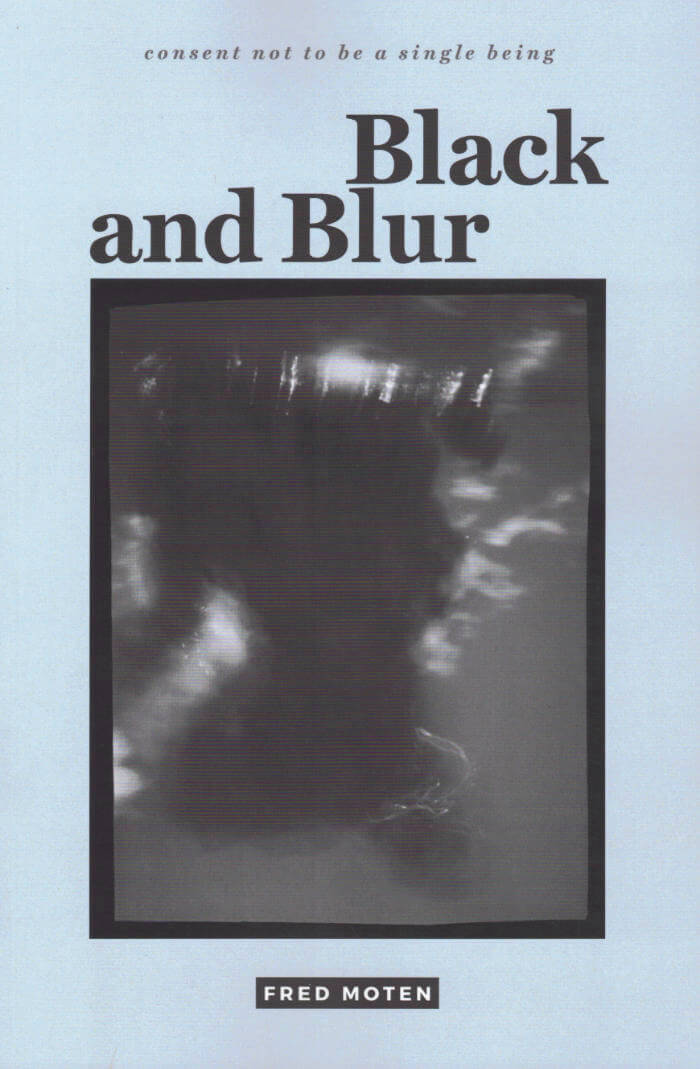
Black and Blur
In Black and Blur—the first volume in his sublime and compelling trilogy consent not to be a single being—Fred Moten engages in a capacious consideration of the place and force of blackness in African diaspora arts, politics, and life. In these interrelated essays, Moten attends to entanglement, the blurring of borders, and other practices that trouble notions of self-determination and sovereignty within political and aesthetic realms.
Black and Blur is marked by unlikely juxtapositions: Althusser informs analyses of rappers Pras and Ol' Dirty Bastard; Shakespeare encounters Stokely Carmichael; thinkers like Kant, Adorno, and José Esteban Muñoz and artists and musicians including Thornton Dial and Cecil Taylor play off each other. Moten holds that blackness encompasses a range of social, aesthetic, and theoretical insurgencies that respond to a shared modernity founded upon the sociological catastrophe of the transatlantic slave trade and settler colonialism. In so doing, he unsettles normative ways of reading, hearing, and seeing, thereby reordering the senses to create new means of knowing.
Fred Moten is Professor of Performance Studies at New York University and the author of B Jenkins, also published by Duke University Press, In the Break: The Aesthetics of the Black Radical Tradition, and coauthor of The Undercommons: Fugitive Planning & Black Study.
(Dec 2017)
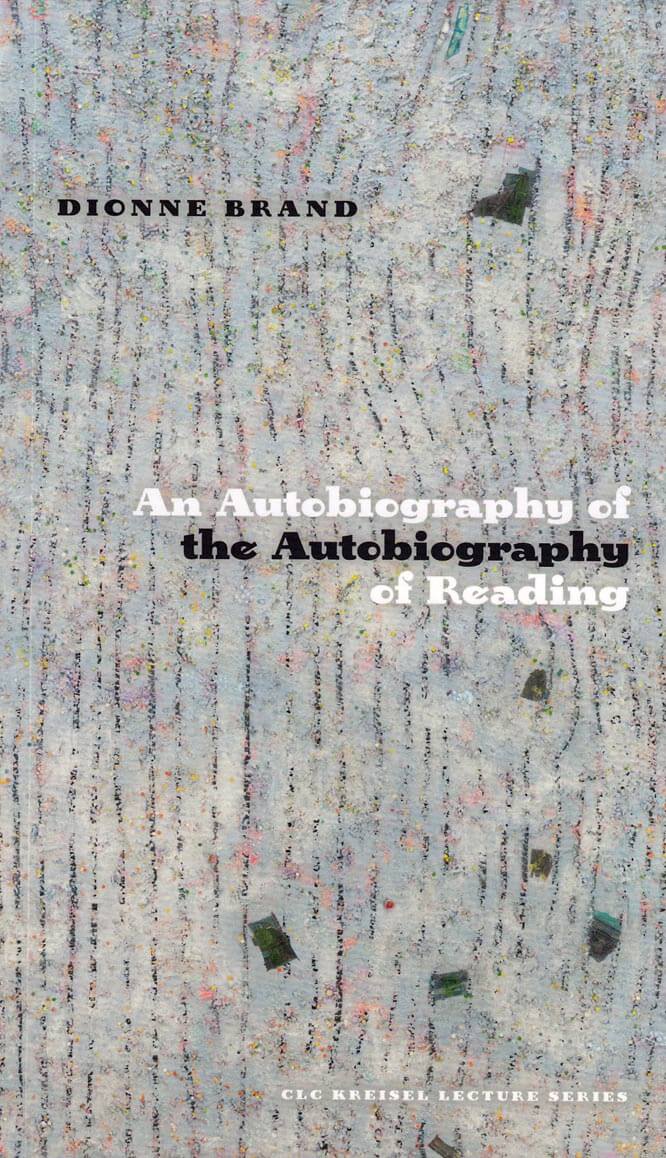
An Autobiography of the Autobiography of Reading
"The geopolitics of empire had already prepared me for this...coloniality constructs outsides and insides, worlds to be chosen, disturbed, interpreted and navigated - in order to live something like a real self."
Internationally acclaimed poet and novelist Dionne Brand reflects on her early reading of colonial literature and how it makes Black being inanimate. She explores her encounters with colonial, imperialist, and racist tropes; the ways that practices of reading and writing are shaped by those narrative structures; and the challenges of writing a narrative of Black life that attends to its own expression and its own consciousness.
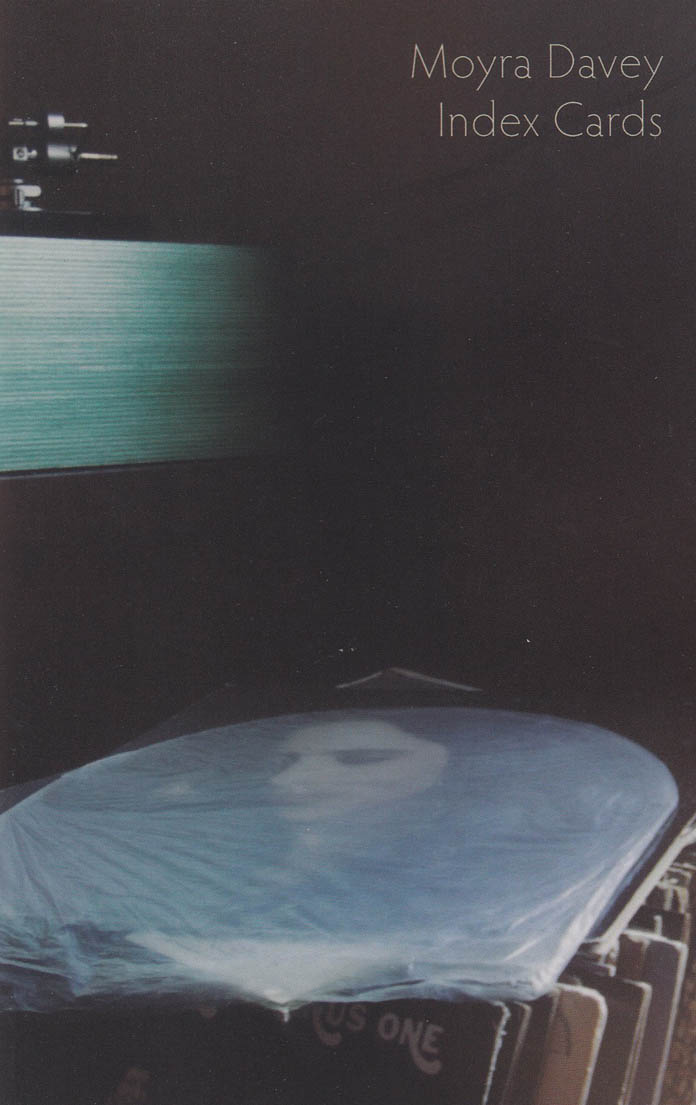
Index Cards: Selected Essays
In these essays, the acclaimed artist, photographer, writer, and filmmaker Moyra Davey often begins with a daily encounter, with a photograph, a memory, or a passage from a book, and links that subject to others, drawing fascinating and unlikely connections, until you can almost feel the texture of her thinking.
While thinking and writing, she weaves together disparate writers and artists, Mary Wollstonecraft, Jean Genet, Virginia Woolf, Janet Malcolm, Chantal Akerman, and Roland Barthes, among many others, in a way that is both elliptical and direct, clearheaded and personal, prismatic and self-examining, layering narratives to reveal the thorny but nourishing relationship between art and life.
Published May 2020.

Wretched Strangers
In response to surges of violent British nationalism and political paranoia around borders, and to related social and ethical crises, JT Welsch and Ágnes Lehóczky have assembled an anthology to mark the vital contribution of non-UK-born writers to this country’s poetry culture. Wretched Strangers brings together innovative writing from around the globe, celebrating the irreducible diversity such work brings to ‘British’ poetry. While documenting the challenges faced by writers from elsewhere, these pieces offer hopeful re-conceptions of ‘shared foreignness’ as Lila Matsumoto describes it, and the ‘peculiar state of exiled human,’ in Fawzi Karim’s words.
The book is published by Boiler House Press to commemorate the anniversary of the June 2016 EU Referendum and in solidarity through struggles ongoing and to come. Proceeds will be donated to charities fighting for the rights of refugees.
Alireza Abiz • Astrid Alben • Tim Atkins • Andre Bagoo • Veronica Barnsley • Khairani Barokka • Leire Barrera-Medrano • Katherine E. Bash • Áine Belton • Caroline Bergvall • Sujata Bhatt • Rachel Blau DuPlessis • Fióna Bolger • Ben Borek • Andrea Brady • Serena Braida • Wilson Bueno • James Byrne • Kimberly Campanello • J.R. Carpenter • Mary Jean Chan • che • Matthew Cheeseman • Iris Colomb • Giovanna Coppola • Anne Laure Coxam • Sara Crangle • Emily Critchley • Ailbhe Darcy • Nia Davies • Tim Dooley • Benjamin Dorey • Angelina D’Roza • Katherine Ebury • Dan Eltringham • Ruth Fainlight • Kit Fan • León Felipe • Alicia Fernández • Veronica Fibisan • Steven J Fowler • Livia Franchini • Ulli Freer • Anastasia Freygang • Kit Fryatt • Monika Genova • Geoff Gilbert • Peter Gizzi • Chris Gutkind • Cory Hanafin • Edmund Hardy • David Herd • Jeff Hilson • Áilbhe Hines • Alex Houen • Anthony Howell • Nasser Hussain • Zainab Ismail • Maria Jastrzębska • Lisa Jeschke • Evan Jones • Loma Sylvana Jones • Maria Kardel • Fawzi Karim • Kapka Kassabova • Özgecan Kesici • Mimi Khalvati • Robert Kiely • Michael Kindellan • Igor Klikovac • Ágnes Lehóczky • Éireann Lorsung • Patrick Loughnane • John McAuliffe • Aodán McCardle • Niall McDevitt • Luke McMullan • Christodoulos Makris • Ethel Maqeda • Lila Matsumoto • Luna Montenegro • Stephen Mooney • Ghazal Mosadeq • Erín Moure • Vivek Narayanan • Cristina Navazo-Eguía Newton • Alice Notley • Terry O’Connor • Wanda O’Connor • Gizem Okulu • Claire Orchard • Daniele Pantano • Astra Papachristodoulou • Fani Papageorgiou • Richard Parker • Sandeep Parmar • Albert Pellicer • Pascale Petit • Adam Piette • Jèssica Pujol Duran • Alonso Quesada • Ariadne Radi Cor • Nat Raha • Nisha Ramayya • Peter Robinson • William Rowe • Lisa Samuels • Jaya Savige • Ana Seferovic • Sophie Seita • Seni Seneviratne • Timea Sipos • Zoë Skoulding • Irene Solà • Samuel Solomon • Agnieszka Studzinska • James Sutherland-Smith • George Szirtes • Rebecca Tamás • Harriet Tarlo • Shirin Teifouri • Virna Teixeira • David Toms • Sara Torres • Kinga Toth • Claire Trévien • David Troupes • Arto Vaun • Juha Virtanen • J. T. Welsch • David Wheatley • Elżbieta Wójcik-Leese • Jennifer Wong • Isaac Xubín • Jane Yeh

Deux Soeurs
From Audre Lorde and Adrienne Rich to Basma Alsharif and Pauline Oliveros, Deux Soeurs brings together a chorus of voices that explore representations of parenthood, friendship, and disobedience.
The book acts as a reader to artist Beatrice Gibson's films, I Hope I'm Loud When I'm Dead (2018) and Two Sisters Who Are Not Sisters (2019), and includes material that informed Gibson's working process, together with the artist's texts and notes used in both films. Turning to the figure of the poet as a guide in times of chaos, Deux Soeurs presents a framework for an ethics of artistic and social collaboration.
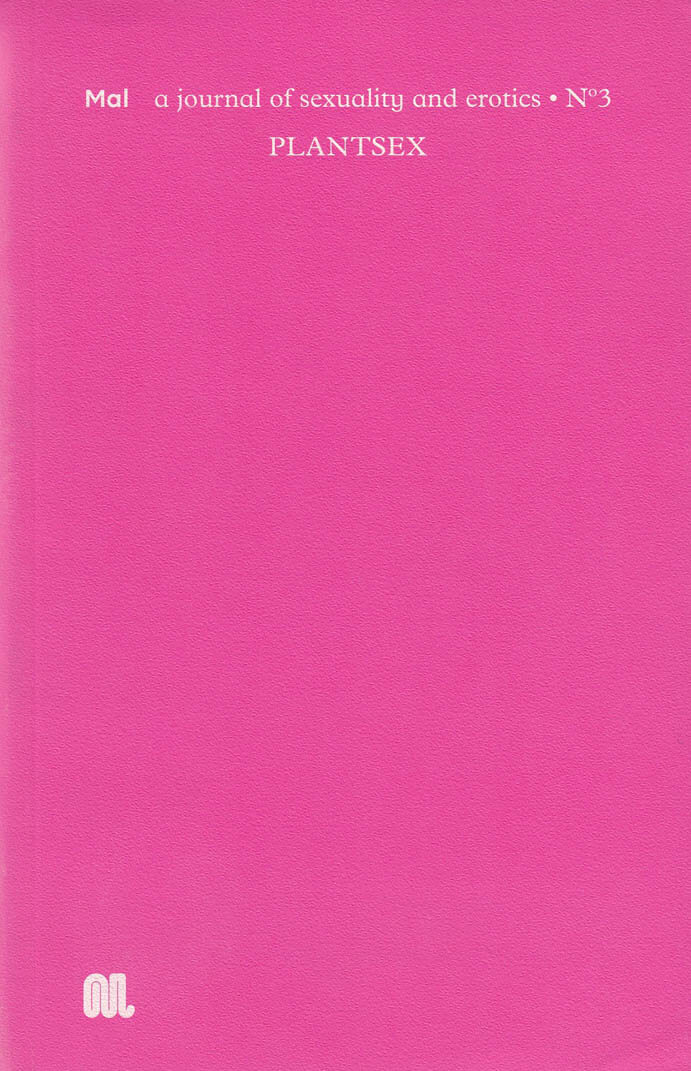
MAL, Nº 3: PLANTSEX
Kathryn Maris, Maria Dimitrova
On botany and eroticism in twelve essays, stories and poems. Published in collaboration with Serpentine Galleries.
First published: April 2019.
This issue of Mal Journal features an essay by Chloe Aridjis on Mexican flora and its foreigners, a sequence of poems by Bhanu Kapil, an essay on the sex lives of plants by Emanuele Coccia, a sci-fi story by artist Victoria Sin, a personal exploration of the queerness of gardening by Julia Bell, an essay on queer botanics by film critic Teresa Castro, a sequence of botanical nursery rhymes and artworks by artist, poet and gardener Alex Cecchetti, a new poem (and somatic poetry ritual) by CAConrad, an essay by writer and poet Daisy Lafarge asking ‘Can you be a revolutionary & still love flowers?’, excerpts from the Song of Songs and Ovid's Fasti V and Metamorphoses, and illustrations by Australian artist Yi Xiao Chen.